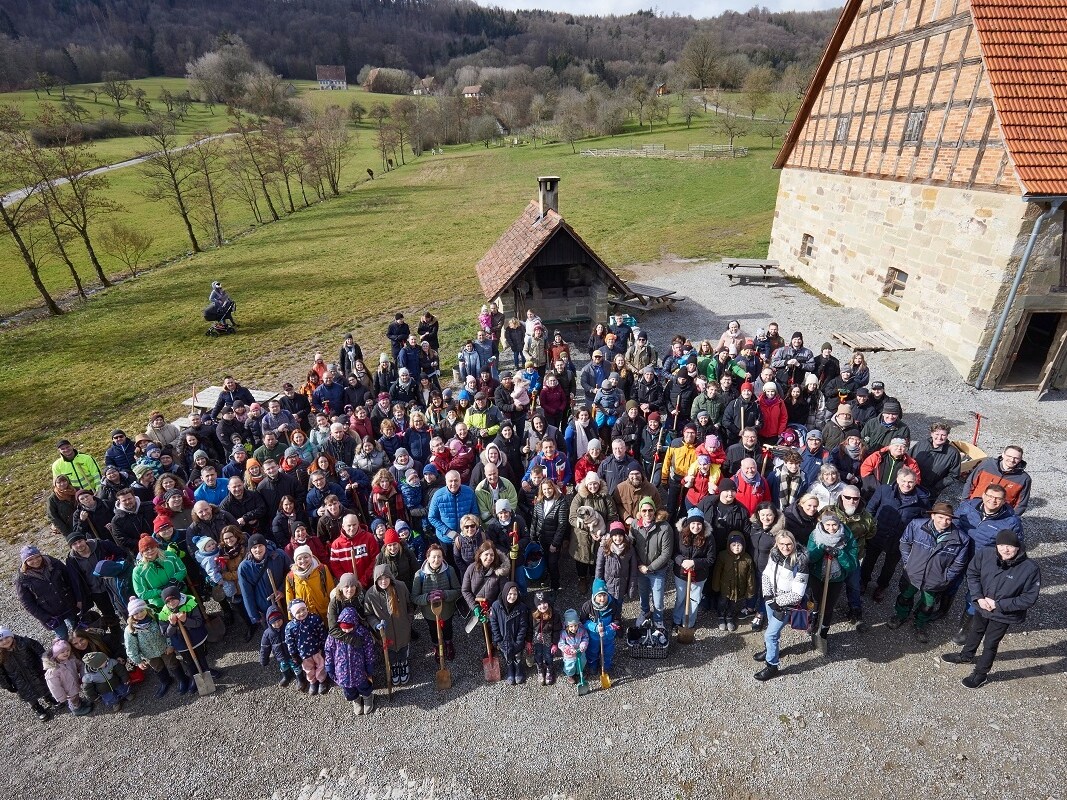- 31. March 2023
- Printed Circuit Boards
Würth Elektronik and Hohenloher Freilandmuseum take up spades
Content you may also like

Partner project at the Hohenloher Freilandmuseum
Both the Würth Elektronik Group and the Hohenloher Freilandmuseum in Schwäbisch Hall-Wackershofen are committed to the Hohenlohe-Franconia region in many ways. Together, they are currently implementing a climate protection project: Several hundred trees and shrubs are being planted on the grounds of the open-air museum. Employees and their families therefore took up their spades on Saturday, March 11 and showed active commitment as tree sponsors.
Despite forecasts to the contrary, the weather played along and even the sun showed up, creating good conditions when employees from the Würth Elektronik sites in Niedernhall, Waldzimmern and Rot am See and the Hohenloher Freilandmuseum got down to work together with their families at the Freilandmuseum in Wackershofen. The approximately 250 volunteers busily carried the logs to the planting sites and dug out holes in the ground. Young and old alike lent a hand, warmed themselves in between at the large box stove in the mill room and at the end immortalized themselves by name as tree sponsors on wooden signs.
"The trees are species typical of the region and landscape, such as birch, alder, poplar, linden, oak, sycamore maple and chestnut, as well as nut and fruit trees and the endangered black poplar, which is also the tree species that can extract the most CO2 from the air," explained museum director Michael Happe about the event. "So far, the only immediate measure available to us to mitigate the effects of climate change is to plant trees."
He shares his knowledge with the integrated tree nursery Waller from Schwäbisch Hall: like all plant species, trees extract CO2 from the atmosphere, which is bound in the wood in the form of carbon. As long as a tree is alive, the carbon remains bound; moreover, the tree permanently releases as much oxygen as 10 people need to breathe. Trees and shrubs also affect the microclimate by providing shade and water storage, and offer nesting, breeding and habitat for birds, small animals and insects. "With this campaign, we are helping the museum to reduce its carbon footprint and sending out a signal that we have regional roots, something that has always been of great importance to Würth," says Würth Business Unit Manager Jörg Murawski, explaining the company's commitment to financially supporting the campaign.
"It's a contribution to sustainability - and it's happening now. The campaign raises awareness among our employees today and, in the future, among all visitors to the museum," Karl-Heinz Groß and Dr. Klaus Wittig, Managing Directors in Waldzimmern, are aware and thank the committed employees in their welcome address that morning.
"Clearly," Daniel Klein, Managing Director of the Würth Elektronik Printed Circuit Board Division, is also pleased, "environmental and climate protection have been part of our corporate strategy for many years. Here, moreover, we are reaching out to people and it would be nice if, together with the open-air museum, we could also use this to encourage imitation and multiplication."